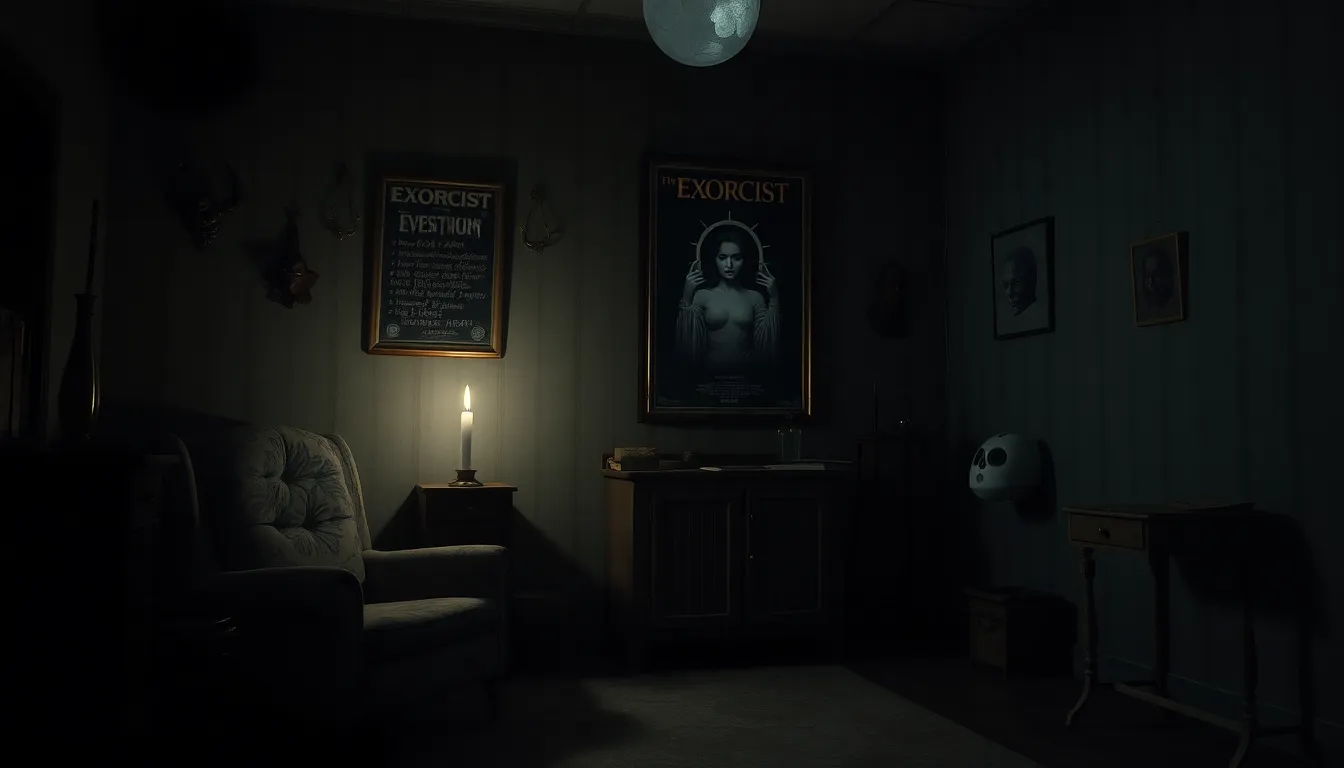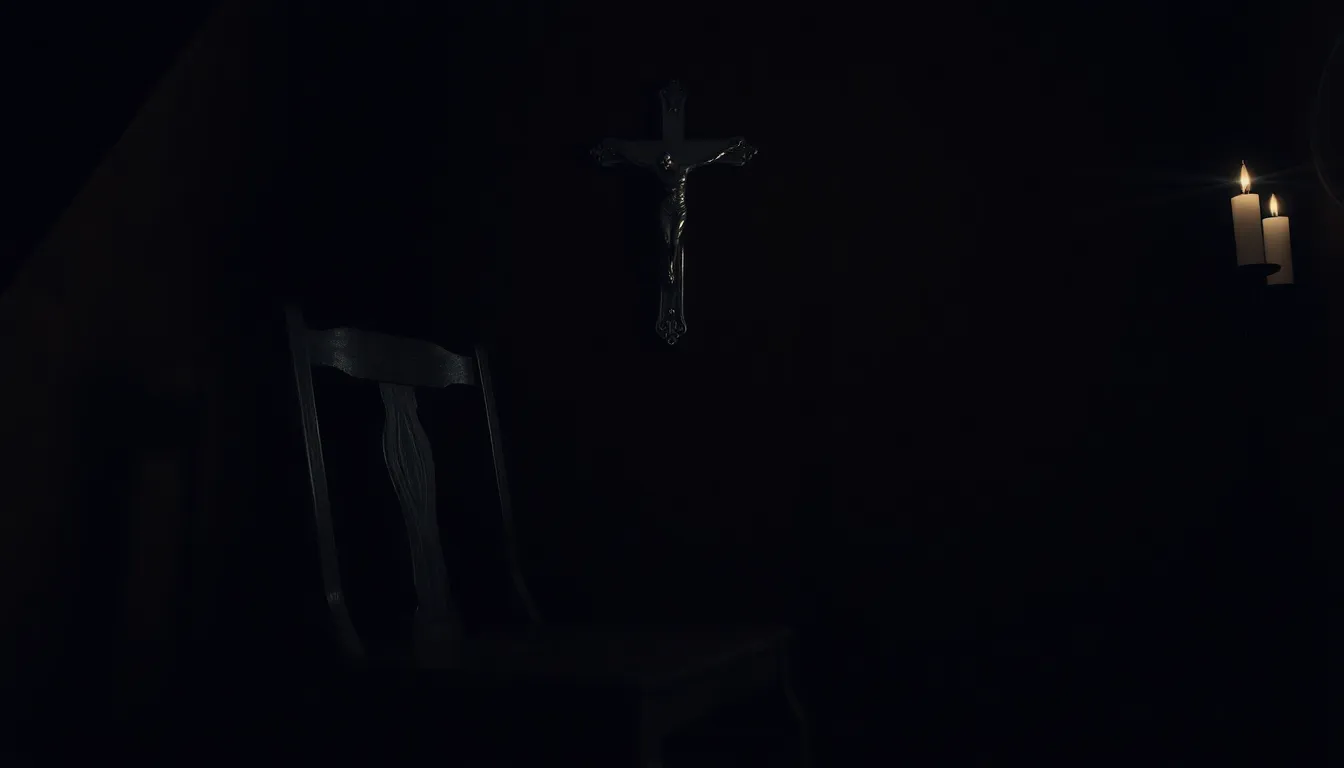Demonic movies have a unique way of creeping into the darkest corners of the mind, blending fear with fascination. They pull audiences into a world where the supernatural meets the terrifyingly real, leaving viewers questioning what lurks in the shadows. From spine-chilling exorcisms to sinister possessions, these films tap into our primal fears, making us laugh nervously while clutching our popcorn.
Demonic Movies
Demonic movies captivate audiences by blending elements of horror and the supernatural. These films often evoke deep-seated fears while showcasing the unknown.
Definition and Characteristics
Demonic movies typically center around themes of possession, exorcism, and the battle between good and evil. Frightening imagery enhances their intensity, as characters confront malevolent forces. They frequently feature dark settings and unsettling soundtracks, amplifying the sense of dread. Additionally, strong character arcs often illustrate the psychological turmoil stemming from encounters with the supernatural. Engaging plots frequently include twists that challenge viewers’ perceptions of reality.
Historical Context
The origins of demonic movies can be traced back to early cinematic works, with influential titles like Nosferatu from 1922 paving the way. The genre gained widespread popularity in the 1970s, particularly with the release of The Exorcist in 1973. This film’s critical and commercial success inspired a surge of similar productions. Cultural and religious contexts significantly shaped the genre, where societal fears about the unknown influenced storytelling. Films began exploring various cultural interpretations of evil, contributing to a rich tapestry of demonic narratives throughout the decades.
Popular Demonic Movies

Demonic movies captivate audiences through their exploration of supernatural themes. Classic films and recent releases both resonate with viewers, offering chilling narratives about possession and exorcisms.
Classic Examples
“Nosferatu” remains a seminal work in horror cinema, showcasing the haunting effects of the supernatural. “The Exorcist,” released in 1973, gained legendary status for its intense portrayal of a young girl’s possession. In the 1980s, “Poltergeist” introduced audiences to malevolent spirits in domestic settings. “The Omen” also stood out during this era, presenting the chilling tale of an antichrist child. Each of these films played a crucial role in shaping the genre, establishing tropes that continue to influence modern demonic narratives.
Recent Releases
Recent films like “Hereditary” have garnered acclaim, combining family drama with elements of the supernatural. “The Conjuring” series also excels in reinvigorating the genre, showcasing real-life paranormal investigators confronting demonic forces. “The Nun,” a spinoff from “The Conjuring,” explores the origins of the demonic presence in a convent setting. Other films, such as “Midsommar,” blend psychological horror with folkloric elements. These recent additions reflect evolving societal fears and continue to engage audiences with their unsettling themes.
Themes and Symbolism
Demonic movies explore powerful themes that resonate deeply with viewers. They often center on the clash between good and evil, portraying the struggle against malevolent forces.
Good vs. Evil
Good and evil serve as central themes in demonic films. Spectacular confrontations between protagonists and antagonists generate tension and captivate audiences. For example, characters often undergo significant transformations while battling demonic entities, amplifying the stakes. Iconic portrayals of exorcists and their courageous fights against dark forces underscore the importance of faith and inner strength. Such narratives challenge viewers’ beliefs about morality, ultimately illustrating that the line between good and evil can blur under extreme circumstances. This tension keeps audiences engaged, leaving them questioning the nature of their own convictions.
The Psychology Behind Fear
The psychology behind fear plays a vital role in demonic movies. Audiences confront their deepest anxieties through the lens of supernatural horror. Such films evoke strong emotional responses, often tapping into fears surrounding the unknown and uncontrollable forces. Fear of possession resonates with individuals on a personal level, prompting reflections on vulnerability and loss of autonomy. As characters grapple with terror, viewers become aware of their own psychological limitations and resilience. The thrilling experience of fear generates an adrenaline rush, enhancing viewer investment in the characters’ fates and the unfolding narratives. Ultimately, demonic films challenge audiences to confront both internal and external fears.
The Impact on Pop Culture
Demonic movies significantly influence contemporary pop culture, shaping trends across various media forms. Audiences frequently encounter themes and elements from this genre in movies, television shows, and literature.
Influence on Other Genres
Demonic themes extend beyond horror. They enrich thrillers, dramas, and even comedies by introducing psychological tension and supernatural elements. The presence of possession can enhance character conflicts in romantic comedies, adding depth to interpersonal struggles. Such cross-genre influences are evident in films like Get Out, where subtle demonic undertones intertwine with social commentary. Blending genres allows filmmakers to explore the human condition through new lenses.
Memorable Characters and Iconic Scenes
Memorable characters from demonic movies often become cultural touchstones. Regan MacNeil from The Exorcist remains an emblematic figure of possession horror. Iconic scenes, such as the exorcism sequence, evoke visceral reactions and endure in public consciousness. The Nun’s horrifying revelations resonate through various cultural references, showcasing how these figures become symbols of broader societal fears. These characters and scenes not only entertain but also provoke discussions around morality, faith, and the unseen forces impacting human lives.
Conclusion
Demonic movies continue to captivate audiences by intertwining fear with fascination. They invite viewers into a world where the battle between good and evil plays out in chilling narratives. As these films evolve they reflect societal fears and cultural contexts, ensuring their relevance across generations.
The enduring legacy of demonic films is evident in their influence on pop culture and other genres. Iconic characters and memorable scenes provoke thought and discussion about morality and the unseen forces that shape human experiences. Ultimately these movies challenge audiences to confront their own fears while delivering thrilling entertainment that resonates long after the credits roll.

